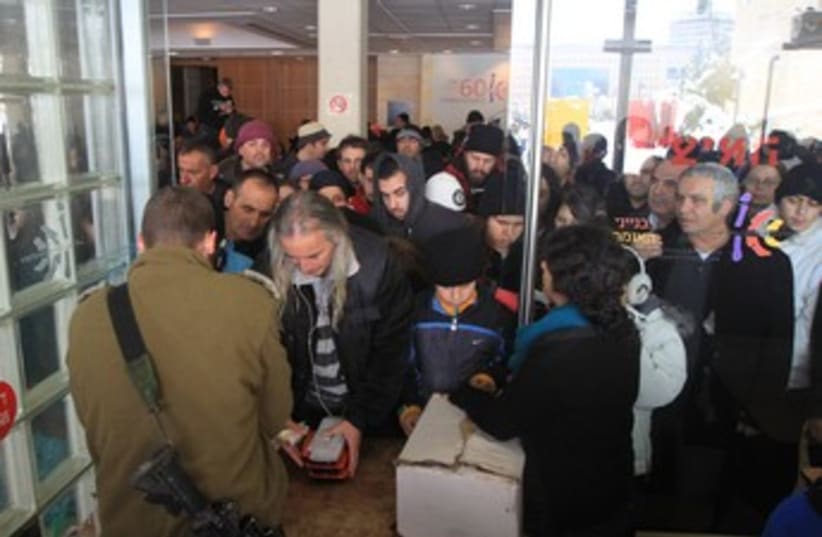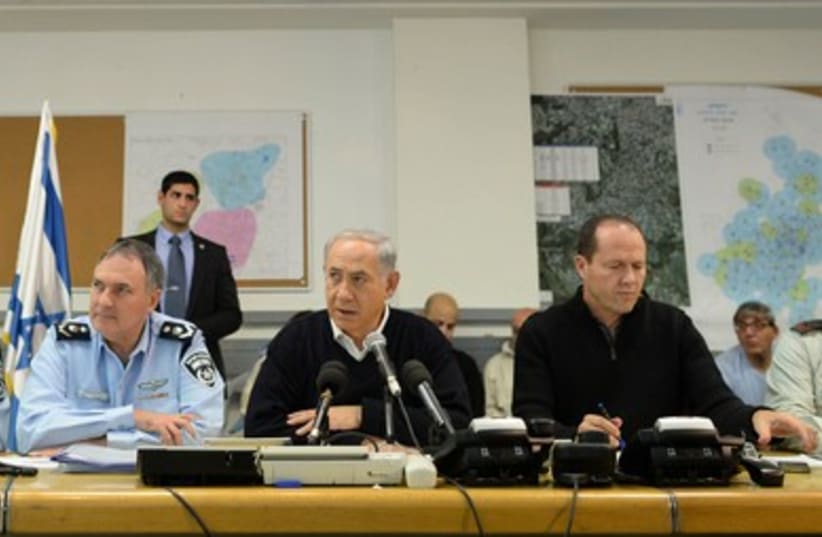
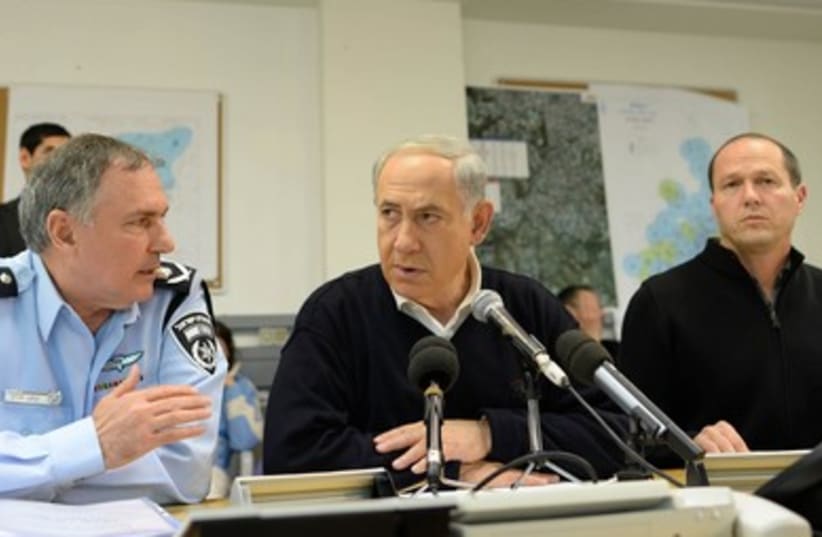

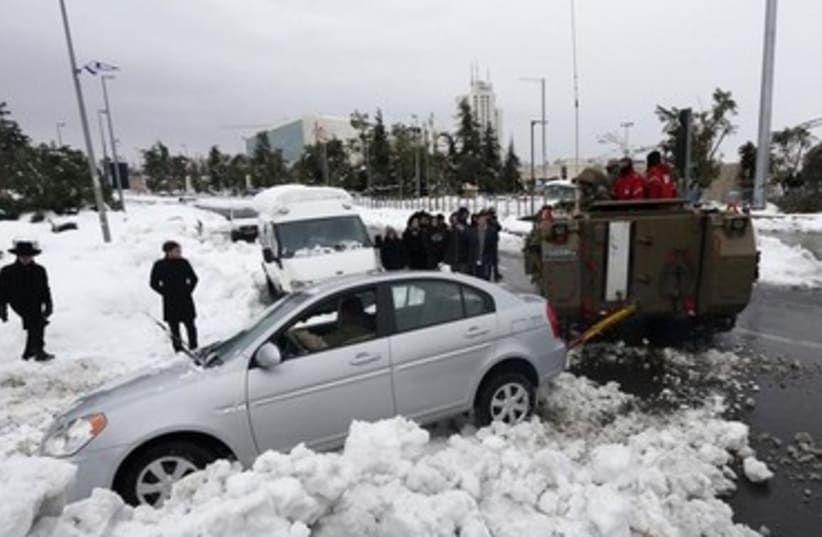
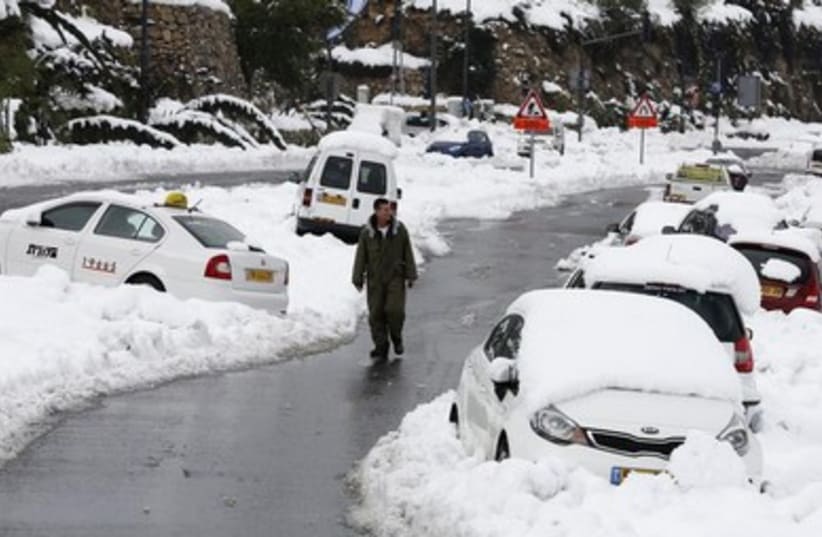

Route 1, which connects the capital with Tel Aviv, was reopened to public transportation, and buses and taxis began to offer services to Jerusalemites late Saturday. Officials have yet to announce when the light rail system will resume operations.While the worst of the storm has subsided, municipal officials said on Saturday that schools and the courts would be suspended on Sunday. Safed, which was also hit hard by the storm, will also close its schools and courts on Sunday.The Israel Electric Company said on Saturday that it hopes to restore power to half of the tens of thousands of households that were cut off from power over the course of the last two days sometime within the next 24 hours.While the IEC did manage to bring power back to Israeli homes on the Golan Heights, there remain 13,000 households in Jerusalem that do not have electricity. Across Israel, there are an estimated 20,000 customers who are without electricity due to damage caused by the storm.“The goal is to begin the week with a Jerusalem that’s open for business,” said police commissioner Yohanan Danino, who also praised the cops, soldiers, electric crews, and rescue volunteers who worked to help residents in need.“Public servants saved thousands of lives, and one has to hear these stories to believe them,” the police chief said. “Hundreds of policemen went by foot in the snow and saved women and children who were trapped in their cars.”“The prime minister has instructed all state agencies to do everything in order to open the entrance to Jerusalem, the capital of Israel, but not at the risk of endangering lives,” Danino said. “We will do all we can to act and restore life to normal. We just need to act carefully.”In a special situational assessment that was broadcast on live television, Prime Minister Binyamin Netanyahu commented on the steps being taken to recover from the aftereffects of the inclement weather.“I’d like to extend my gratitude to the thousands [of people] who continue to work,” he said. “The citizens contributed tremendously to the security and rescue forces. An event like this happens once every dozens of years, to the best of my knowledge.”“Other countries who encounter similar situations experience much longer paralysis,” the premier said. Netanyahu’s decision to invite media coverage of the situational assessment was met with criticism by his chief political rival.Opposition leader Isaac Herzog (Labor) said it was "unfortunate that while thousands of people still don't have electricity, the prime minister is focused on public relations and making jokes in front of the cameras. I wonder if this briefing had any kind of operational value."Herzog pointed out that on Wednesday he called for the government to be prepared for the storm, and asked why the National Emergency Authority was not immediately activated."Why are the special procedures voted in by the government and cabinet for national emergencies left only on paper? Why does the average citizen not know where to turn, and why didn't the local and national governments coordinate? Why are we always unprepared for the moment of truth?" Herzog asked.As of Saturday evening, the following roadways remained closed: Route 443 in the section connecting Maccabim and Jerusalem; Route 375 from Zur Hadassah Junction to Hossan Junction; Route 386 from Sataf Square to Jerusalem; Route 395 from Kislon to Ramat Raziel; Route 425 from Har Adar to Abu Ghosh; Route 436 from Nebi Samuel Junction to Givat Ze’ev.In the north, Route 89 from Miron to Elifelet is closed in both directions. Eastbound Route 98 has been closed from Magshimim Junction. Route 864 from Rama Junction to Hossan Junction has been shuttered in both directions; Route 866 is closed from Sheva Junction to Mt. Miron; Route 978 has been sealed from Ha’amir Junction to Odem Forest Junction; Route 90 is closed from Sde Trumot to Nahal Bezeq.In the south, motorists are encouraged to avoid the vicinities of Yatir and Har Amsha. Route 316 from the Route 31 entrance to Yishuvim is slippery and dangerous. Heavy traffic jams have been reported due to the difficulty of driving on the slick roadways. In addition, flooding has cut off access to Zikim and Nitzanim beaches. Drivers are encouraged to avoid these areas. Route 232 near Kokhav Michael has been sealed off, as has Route 241 between Magan and Gilat. Route 352 in the Nahura area, Route 234, and the Tze’elim Bridge have also been closed.In Judea and Samaria, Route 5 has been sealed from Oranit to Ariel due to icy roads. Routes 443, 465, and 60 remain closed to traffic. Route 4775 which connects Ariel to Rachelim Junction has also been shuttered.
